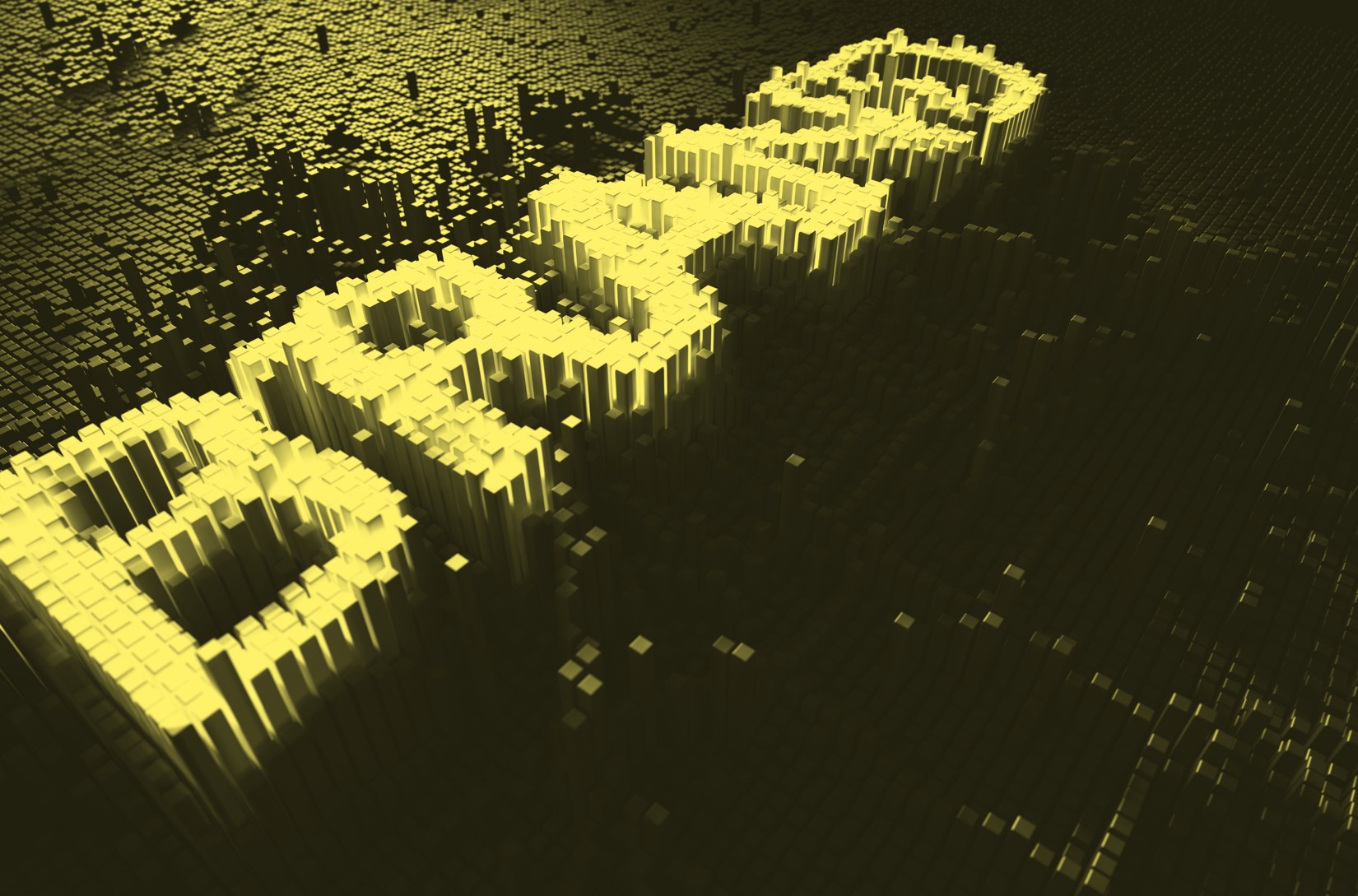
Nearly every time I use the term “brand” when referring to a radio station, I hear from someone who takes exception. They don’t like to think of a radio station as a brand, but in fact, that is exactly what they are.
How can I prove that? When I ask a job applicant to name a station or two in the format they admire, I often hear about a radio station that’s been around a long time, and whose brand is better than how the actual station has evolved. But that’s the power of a great brand. Whether we’re talking media buyers, job hunters, or the trades, an iconic brand can stick around long after the station has eroded, even if it’s just getting by on fumes.
We’ve been asking about the brands core radio users prefer to going on a decade. You glean important insights about their lifestyles and habits when you study the brands they use each week, whether it’s video and audio streaming, as well as social media channels.
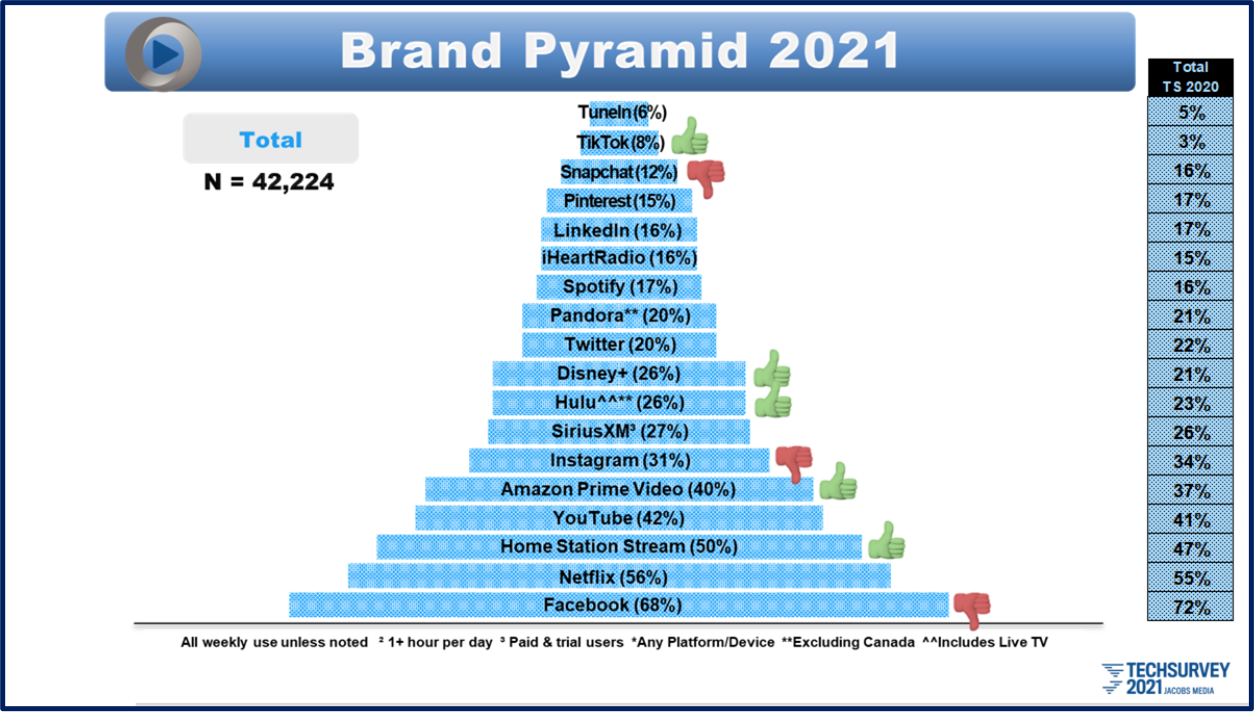
When it comes to brands, momentum is a factor in assessing them. That’s why last year’s percentages are available on the column at the right. To designate brands on the rise (or the decline), we use thumbs-up and thumbs-down emojis. As we’ve noted in the last few surveys – and 2020, “The Year of COVID,” was no exception – video streaming platforms are generally doing very well.
Respondents spending more time at home underscore the rise in popularity for Netflix, Hulu, Amazon Prime Videos, and Disney+, even as new options like HBO Max and Paramount+ came online.
Also note the TikTok rise, modest still at 8%. But much of that is due to the fact that teens don’t make up a prominent part of the Techsurvey sample, just like they don’t in overall radio listening in most markets.
While it is always instructive to study newer brands that seemingly come out of nowhere –- like TikTok, for example – what happens when brands that are still very viable lose their sheen or their essence? How does a brand fall out of favor, and what can be done to bring it back?
That’s a question three out of four brands may be facing as the dust clears on a global pandemic that has dominated our lives for more than a year. The Havas Group has been studying brands and how they’re perceived since 2009. Their newest survey is comprised of nearly 400,000 respondents from around the world, weighing in on hundreds of brands.
And the big, sobering finding is that nearly three of the four brands rated in this extensive study could “disappear overnight” (those are Havas’ words), and most consumers wouldn’t care.
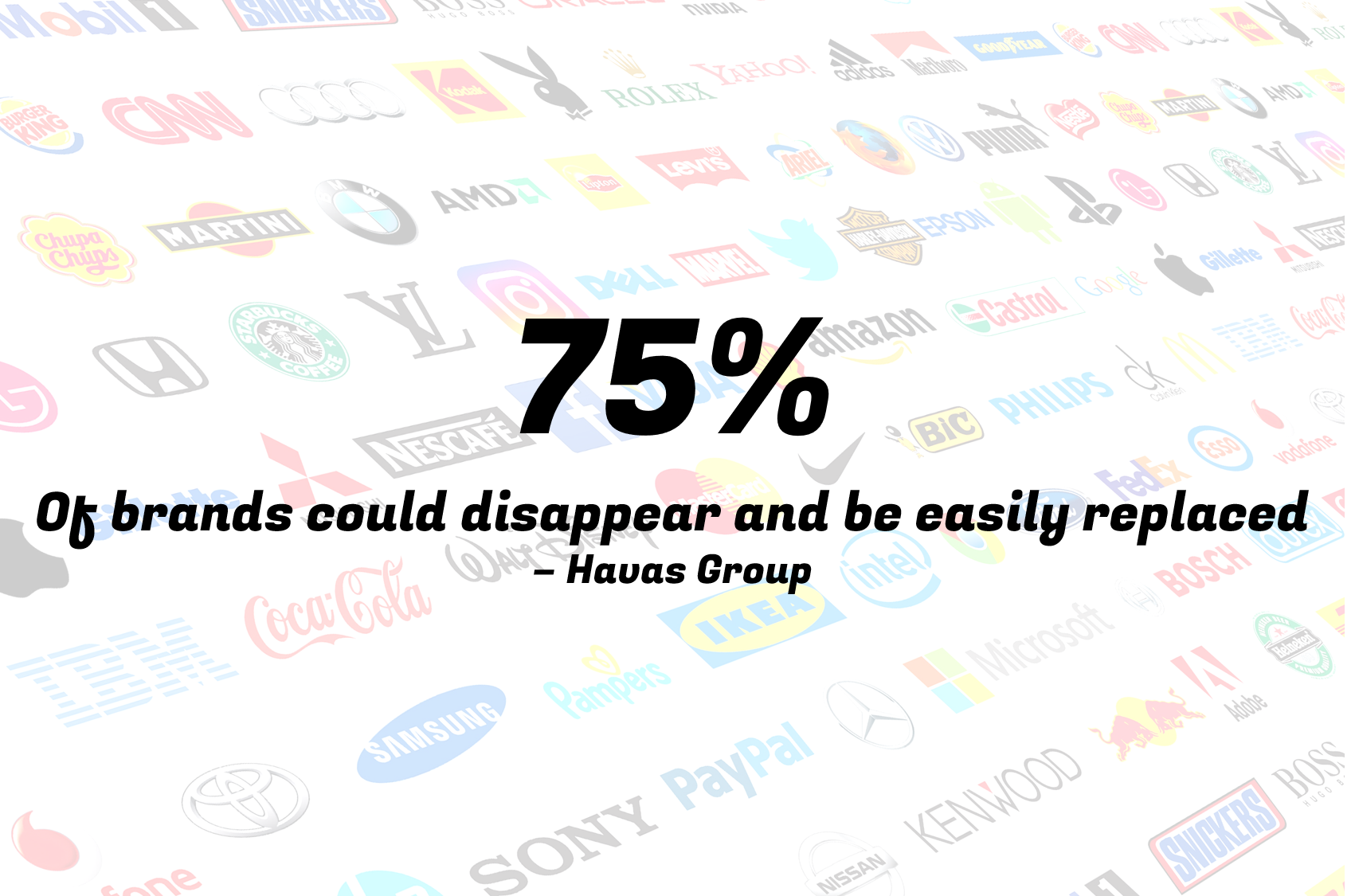
For CMOs and content officers (OK, program directors), this is yet another sign of COVID’s great leveling effect. You can cut the cynicism with a knife. To make matters worse, Havas reports that seven in ten consumers have little faith brands will deliver on their promises.
This year’s survey was conducted in mid-2020 – right in the prime of the pandemic. Could that account for the cynicism Havas saw in their numbers? Are we so depressed, fried, exhausted, and dispirited that standard brand-building tactics are generally being rejected by consumers who have had a really bad 400 or so days?
And why have so many brands fallen from grace in an environment where broken promises, security breaches, government investigations, greedy CEOs, and bad behavior are constantly on display?
As you might imagine, these are the worst numbers the Havas Group has seen since they launched these studies a dozen years ago.
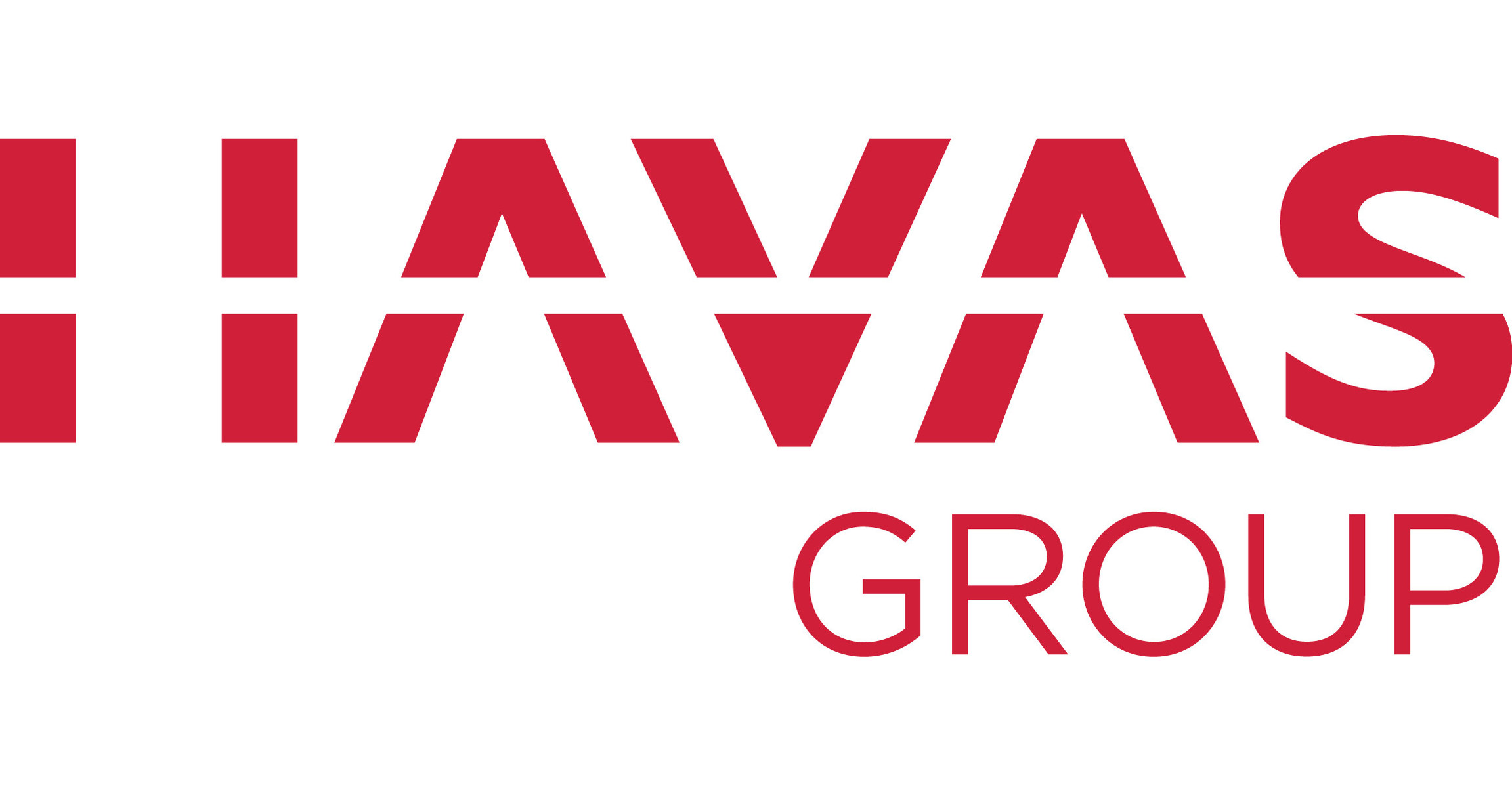
Perhaps brands are being punished during an intensely difficult time. Or maybe just as likely, the incessant marketing and tracking we see online and in social media has frustrated consumers, making them tired of influencers, algorithms, spam, and sleazy tactics.
When so many brands have fallen out of favor – or lost a lot of stature on the hierarchy – does this open the door for local radio stations to step into the breach?
Know this: the behavior that helped get your brand to the dance in the past may not be as relevant in today’s rapidly changing environment.
And to that end, the Havas Group has several observations and suggestions that might strike a responsive chord among some of you:
1. Demand for meaningful experiences – The study’s authors point to retail brands that have made it easier to get deliveries of restaurant food or groceries. But they also note that tech and entertainment brands have made some progress, even during COVID. They explain it this way: When consumers are “experiencing constant engagement with content via tech devices in the home.”
If you’re a regular reader of this blog, this observation should sound familiar to you. Especially during the pandemic (and as byproducts of our three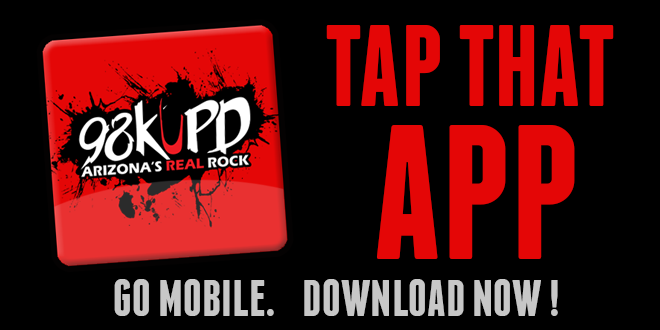 waves of national COVID research), we have been relentless about recommending to the radio market its accessibility via streaming on computer, smartphones, tablets, smart speakers, and even on speaker systems like Sonos.
waves of national COVID research), we have been relentless about recommending to the radio market its accessibility via streaming on computer, smartphones, tablets, smart speakers, and even on speaker systems like Sonos.
This is an easy way for stations to earn some “brand points.” But one caution: Before you start marketing these streaming outlets, make sure you’re optimizing the experience. Does everything work seamlessly, and as promised? When was the last time you monitored your stream on all the aforementioned devices?
2. Help in times of crisis – A key to serving consumers during COVID was to help them navigate the pandemic. That meant disseminating accurate information about what was happening in the community: schools, testing, events, vaccine availability.
 According to Havas, this is a huge deal. More than three in four (77%) respondents expect brands to support them during stressful times. As we know from our Techsurvey research, this can also be emotional support: companionship, connection, mood elevation, and escape.
According to Havas, this is a huge deal. More than three in four (77%) respondents expect brands to support them during stressful times. As we know from our Techsurvey research, this can also be emotional support: companionship, connection, mood elevation, and escape.
If your station did its job during COVID, that bodes well for the health of the brand. And we know there will be more disasters and calamities to come. How you show up the next time something dire impacts your community could be a difference-maker.
3. Diverging cultural factors – It’s never been more important to have a strong sense for the different shades of your audience. If you’re a rock station with primarily a white, male core, there may likely be women, Hispanics, Blacks and other minorities who factor in your cume and overall listenership.
station with primarily a white, male core, there may likely be women, Hispanics, Blacks and other minorities who factor in your cume and overall listenership.
They may share music tastes with your P1s, but that could be where the similarities end. Their sensibilities and world view could likely be quite different than your mainstream audience.
Understanding their expectations of your brand might represent bona fide growth opportunities – something every radio station should be thinking about. Station email databases and web targeting tools make it much easier to be able to craft different messages for audience subgroups, providing assurance you’re talking to people where they live.
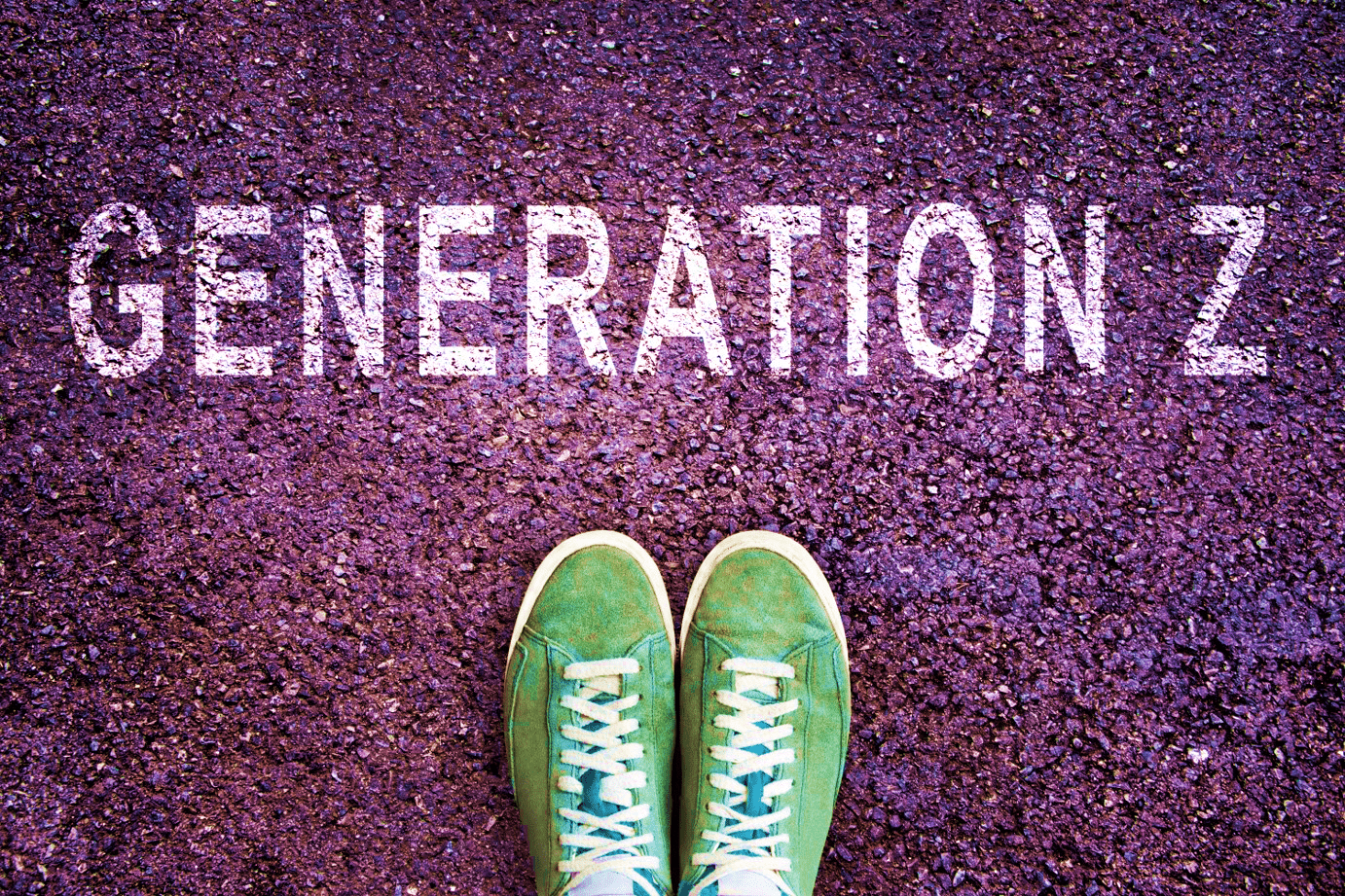 4. Gen Z expects inclusion – The Havas team points out just how different teens line up on so many key issues. They tend to make associations with brands active on social issues.
4. Gen Z expects inclusion – The Havas team points out just how different teens line up on so many key issues. They tend to make associations with brands active on social issues.
The weakest link for most radio broadcasters is its paltry representation among Gen Zs. Some believe teens are a lost cause for radio. But entertainment, service, and personality are all part of where any medium can stand out and be noticed. Yes, even radio.
5. Demand for helpful content – This one is interesting because its definition has shifted – and may continue to morph as COVID plays itself out, and other key issues take its place.
Here’s a sobering data point from Havas – nearly half (48%) of the content provided by brands is considered to have little value.
Given how much effort is spent on content creation by radio broadcasters, this key finding should grab some attention. And if you spend time on radio station websites or even listening to talk breaks, commercials, and promos, how much is truly helpful? Most of it looks like everyone else’s content – generic, banal, disposable.
Rather than populating a station’s digital real estate with “filler” material that can be packaged to generate revenue, why not create content the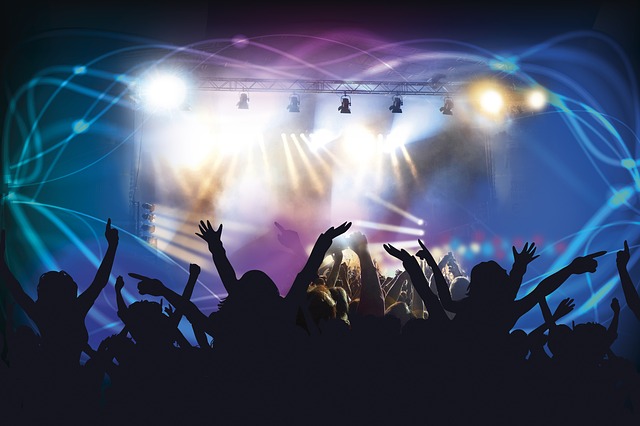 audience values? This is where focus/L.A.B. groups or web surveys conducted among database members can quickly and efficiently identify the content that matters.
audience values? This is where focus/L.A.B. groups or web surveys conducted among database members can quickly and efficiently identify the content that matters.
It might mean having a local concert promoter on each week to talk about who’s in town, venue requirements, and other truly helpful information that helps your audience navigate the new world of entertainment. It could be having someone from the city join the morning show each week to showcase family events over the weekend.
At this odd moment in time when 75% of brands mean little to consumers, the question is how your radio station can end up being part of the 25% that matters.
Brand building can be a precarious process, fraught with sand traps and speed bumps. But at a time when so much is up for grabs, the right radio station, in the right market, with trusted personalities can make a difference.
How can your brand step up a time when your audience really needs you?
A synopsis of the Havas Group “Meaningful Brands 2021” study is available here.
- Like A Pair Of Old Jeans - April 2, 2025
- What’s Fair Is Fair - April 1, 2025
- What’s On Your Bucket List? - March 31, 2025




Back to your point of brands and as it relates to radio- I think its important to break it down into 2 categories; B2B and B2C. iHeart is a B2B brand; their stations are the B2C brands. B2B Radio brands (primarily ownership groups) are relatively new and emerged post the 96 dereg of ownership (perhaps with the exception of when ABC, NBC and CBS owned radio and TV stations in 7 markets total.) Local stations like CKLW, WLS, WNEW-FM, WAKY, KROQ and KSHE are examples of local brands as was The Quiet Storm, WSM, WWRL, WVON or WRKO…the list can go into the hundreds because these were the B2C brands that millions of listeners knew and loved.,,,whether they lived in a Top 5 market or in El Paso, Topeka, Billings or Duluth. To not think of one’s station as a brand misses what each local radio station has been since they signed on.
Important clarification, David. Our industry needs to create more “sticky” B2C brands. For the millions still listening to broadcast radio, they will support vital, entertaining, and quality brands. Appreciated.
I agree. The future locally should be sticky B2C compelling, entertaining local radio. When one does a deep dive on the CKLW’s, WABC’s, WKLO’s, Y’100’s – these were stations where every daypart was filled with the best talent in the market. And, prior to 96, it wasn’t uncommon to find several great radio stations in 1 market- who were live at least from 5a-7p and on weekends…so if a fire broke out or major issue…radio was a place listeners could call and talk to a live DJ who might know what was going on- and if he.she didn’t- you know they’d be looking into it. Now, our first choice online is with the local TV stations or newspaper.s We used to own this…and it wouldn’t be that difficult to own this hill again.